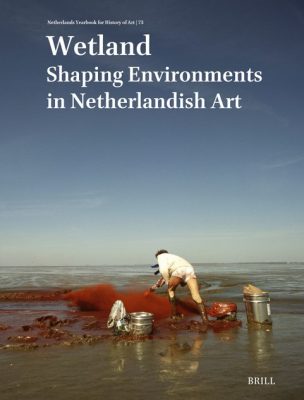What aspects of their environment do artists decide to depict? Are they critical of the way in which others treat the environments that surround them?
The latest volume of the Netherlands Yearbook for History of Art (NKJ) finds an answer to these questions by focusing on the Dutch environment between the fifteenth century and now, a wetland that humans constantly tried to shape and reshape according to their needs. Gathering essays by scholars of early modern and modern and contemporary art, Wetland discovers the past of future landscapes in art.
The volume is edited Joost Keizer, Ann-Sophie Lehmann and Stephanie Porras. For more information, please see the Brill website.
Wetland. Shaping Environments in Netherlandish Art
Joost Keizer, Ann-Sophie Lehmann & Stephanie Porras
Wet land’s past futures
Oliver Kik
Mapping the wet land. The painter-cartographer in the Low Countries, 1480-1550
Rachel Kase
Shifting shores. Environment, cartography and artistic invention in Jan Saenredam’s Beached whale near Beverwijk and Claes Jansz Visscher’s View of Egmond aan Zee
Maurice Saß
Without Nature. Rubens’s wet landscapes: From oikeiosis to ecomimesis
Theresa Brauer
Zwadderen in oil paint. Jan van Goyen’s fluid landscapes
Yannis Hadjinicolaou
A raptor’s-eye view in the early modern Netherlands. Visuality, political landscape, and falconry
Anja Novak
Precarious ground. An experiential approach to Land art in Flevoland
Christopher Heuer
That area of terror. Robert Smithson’s lowlands
Anna-Rosja Haveman
Co-created by the Wadden Sea. Artistic and environmentalist perspectives on Han Jansen’s Waddenprojects
